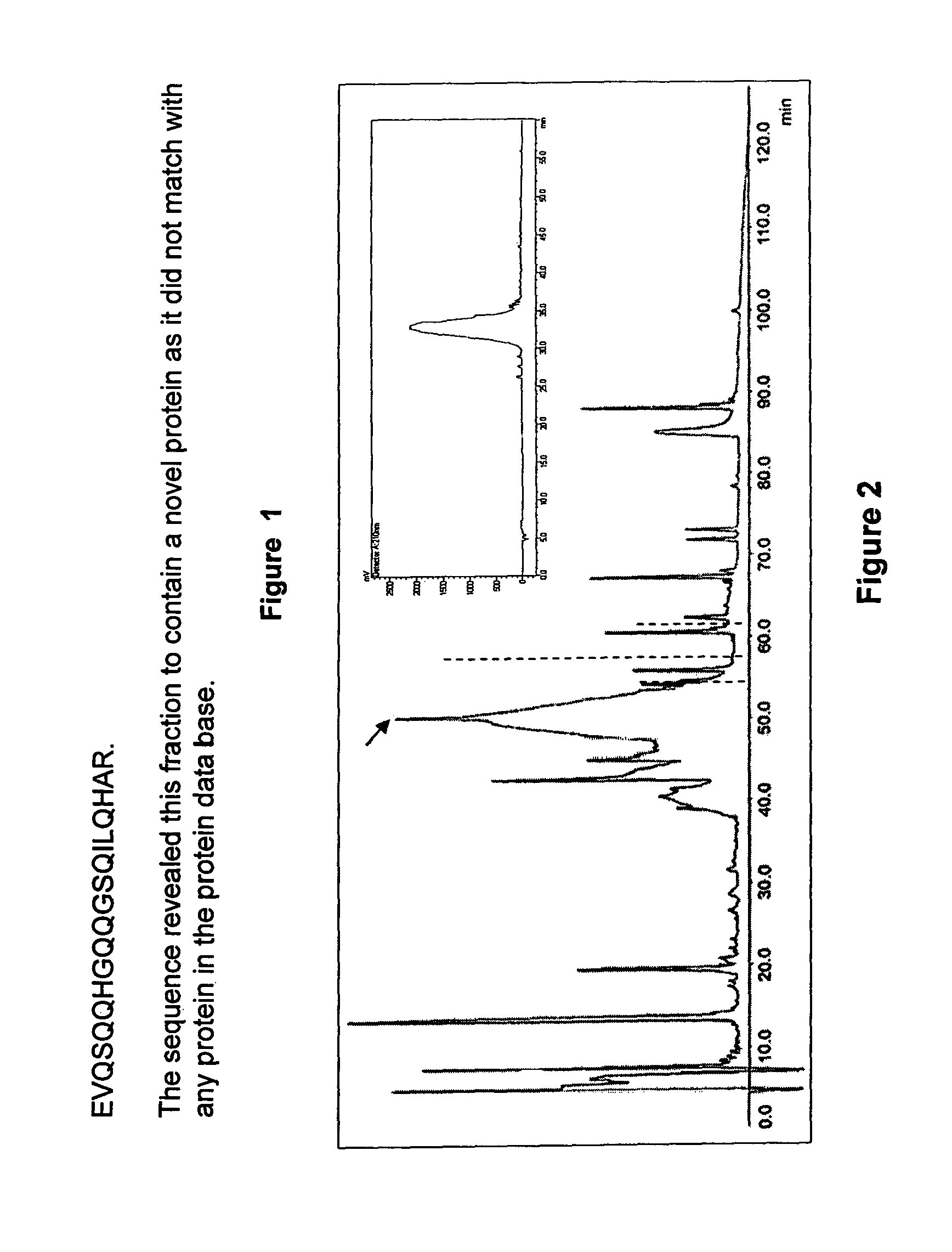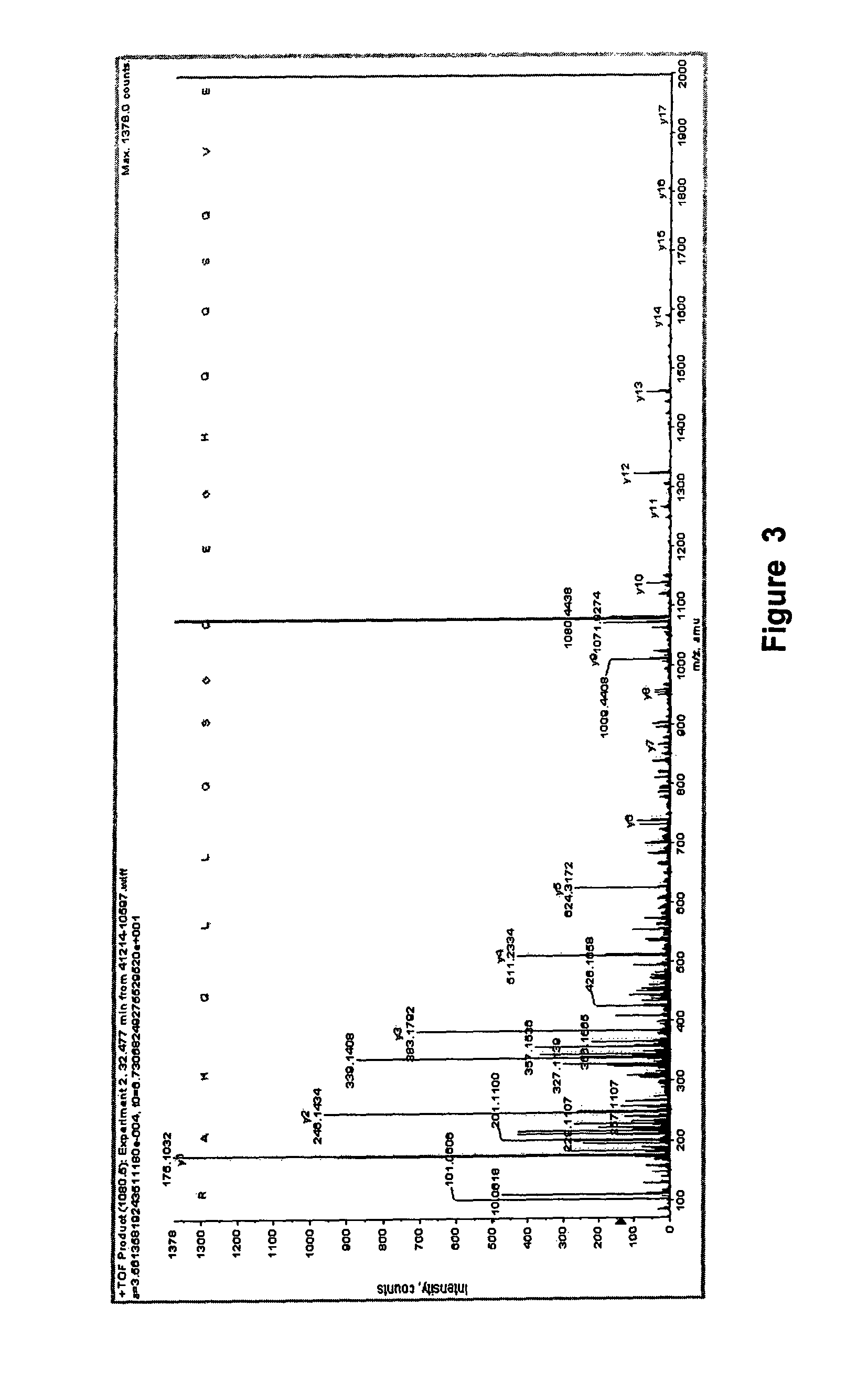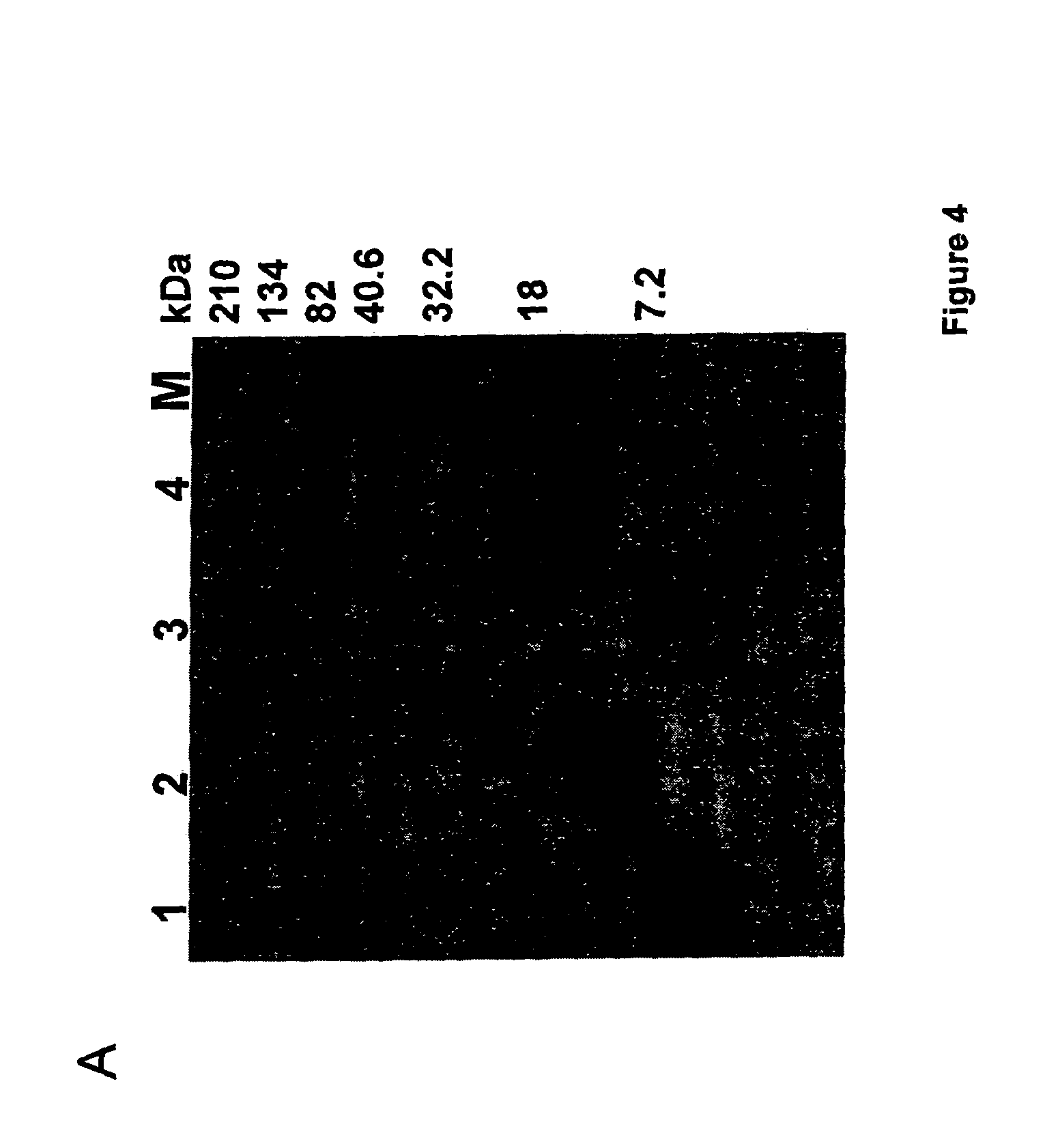Anti diabetic protein
a technology of antidiabetic protein and peptide, which is applied in the field of identification and purification of a novel antidiabetic protein, can solve the problems of long-term damage, failure of various organs, and failure to achieve the desired effect, and achieve the effects of not being able to prevent hypoglycemia and lipoatropy, and not being able to achieve desired success
- Summary
- Abstract
- Description
- Claims
- Application Information
AI Technical Summary
Benefits of technology
Problems solved by technology
Method used
Image
Examples
example-1
Purification of the ADMc1 from Momordica charantia Seeds
[0095]Seeds of M. charantia (Pusa Vishesh variety) obtained from Seed Sales Counter, Indian Agricultural Research Institute, Pusa Road, New Delhi, are decorticated and powdered in liquid nitrogen. Seed proteins are extracted with a mixture of buffered 0.05-0.08 M sulfuric acid and 60-80% ethanol containing protease inhibitor phenylmethylsulfonyl fluoride at a concentration of 0.5-3 mM for 12-16 hours at −20° C. The soluble proteins are collected by centrifugation at 16,000-20,000×g for 1-2 h at 4° C. or by ultrafiltration device (Amersham-Pharmacia, USA). Proteins are further fractionated by applying a salt gradient (50-80% of ammonium salts: ammonium sulfate or carbonate) or differential precipitation with change in pH (isoelectric) by the addition of liquid ammonia. The pelleted protein and soluble protein fractions are checked for hypoglycemic / anti-hyperglycemic activity and it is established that the soluble fraction is enr...
example-2
Characterization of the ADMc1
[0098]MALDI-TOF MS analysis revealed the hypoglycemic / anti-hyperglycemic protein ADMc1 to be of 11420.9 Da. The protein is made up of 96 amino acid residues (SEQ ID NO. 2). SDS-PAGE analysis, in non-reducing and reducing conditions, revealed the ADMc1 to be made up of two polypeptides chains of ˜4 kDa and ˜8 kDa, linked by disulfide bridges. The amino acid sequence of the two polypeptide chains of ˜4 kDa and ˜8 kDa of ADMc1 is given in SEQ ID NO. 3 and 4, respectively. The amino acid sequence of ADMc1 revealed it to be novel that did not match with any protein in the data base. However, it showed similarity with the proteins of 2S albumin family, including conservation of 8 cysteine residues. The hetero-dimeric nature, the two polypeptide chains being linked through disulfide bridges, presence of eight conserved cysteine residues are all characteristic features of proteins of 2S albumin family of proteins. Amino acid composition analysis revealed that th...
example-3
Demonstration of Hypoglycemic / Anti-Hyperglycemic Activity of ADMc1
[0100]To check the bioactivity of the purified ADMc1, alloxan-diabetic rats are used. For this purpose, alloxan monohydrate (freshly prepared in 0.154 M sodium acetate buffer, pH 4.5; 15 mg / 100 g body weight) is administered intraperitoneally to male wistar rats that are starved for 36 hrs. Control rats are injected with corresponding volumes of sodium acetate buffer. They are fed ad libitum and plenty of water is provided. For initial 3 days, rats are administered 2 units of lent insulin intraperitoneally for stabilization, following which, blood glucose level is estimated and animals having glucose level more than 400 mg / 100 ml blood are tested with the purified native ADMc1 along with other known hypoglycemic / anti-hyperglycemic agents. Native ADMc1 (purified from the seeds) is administered subcutaneously at a dose of 15 mg / kg body weight. After administration of the test protein, blood is withdrawn retro-orbitally ...
PUM
| Property | Measurement | Unit |
|---|---|---|
| concentration | aaaaa | aaaaa |
| particle size | aaaaa | aaaaa |
| particle size | aaaaa | aaaaa |
Abstract
Description
Claims
Application Information
 Login to View More
Login to View More - R&D
- Intellectual Property
- Life Sciences
- Materials
- Tech Scout
- Unparalleled Data Quality
- Higher Quality Content
- 60% Fewer Hallucinations
Browse by: Latest US Patents, China's latest patents, Technical Efficacy Thesaurus, Application Domain, Technology Topic, Popular Technical Reports.
© 2025 PatSnap. All rights reserved.Legal|Privacy policy|Modern Slavery Act Transparency Statement|Sitemap|About US| Contact US: help@patsnap.com



